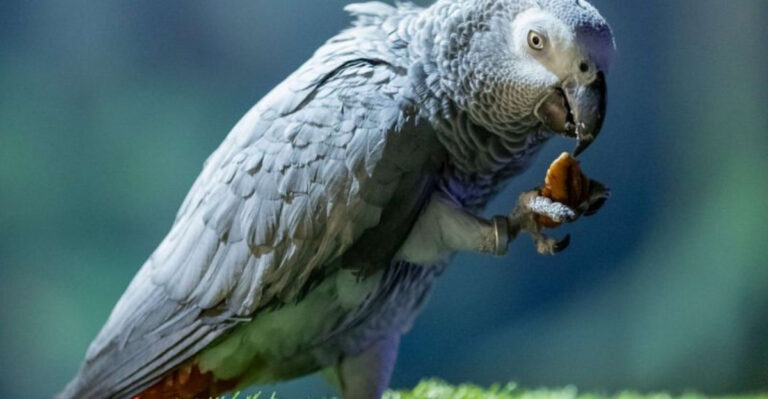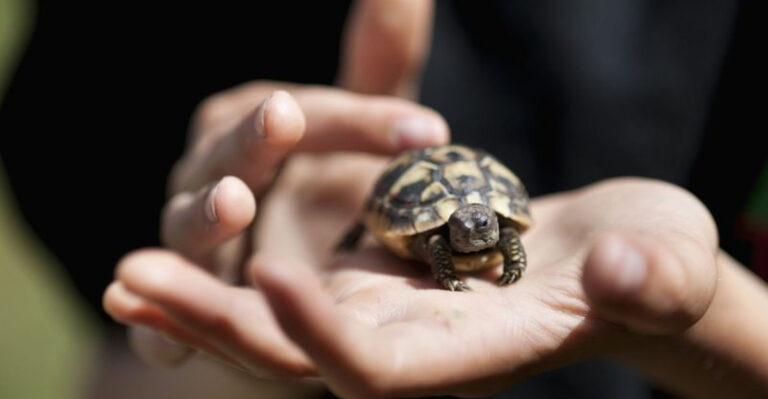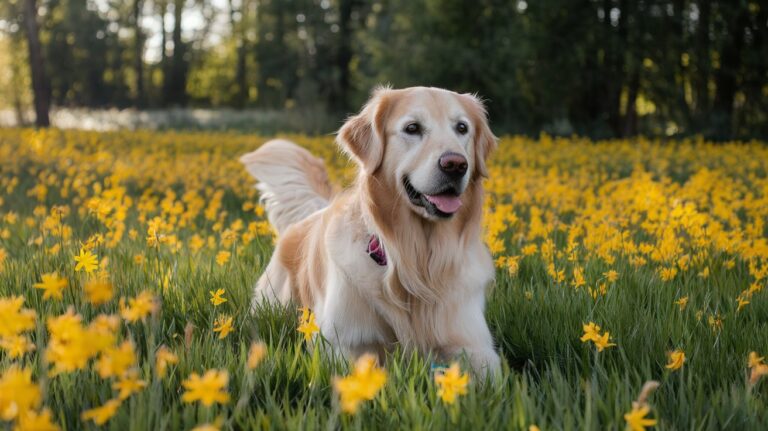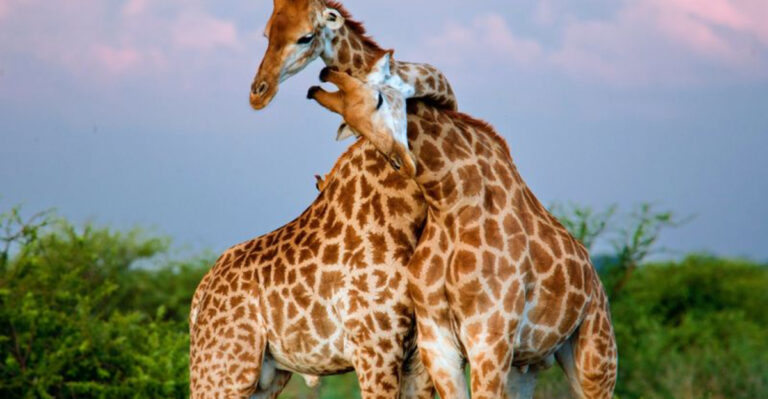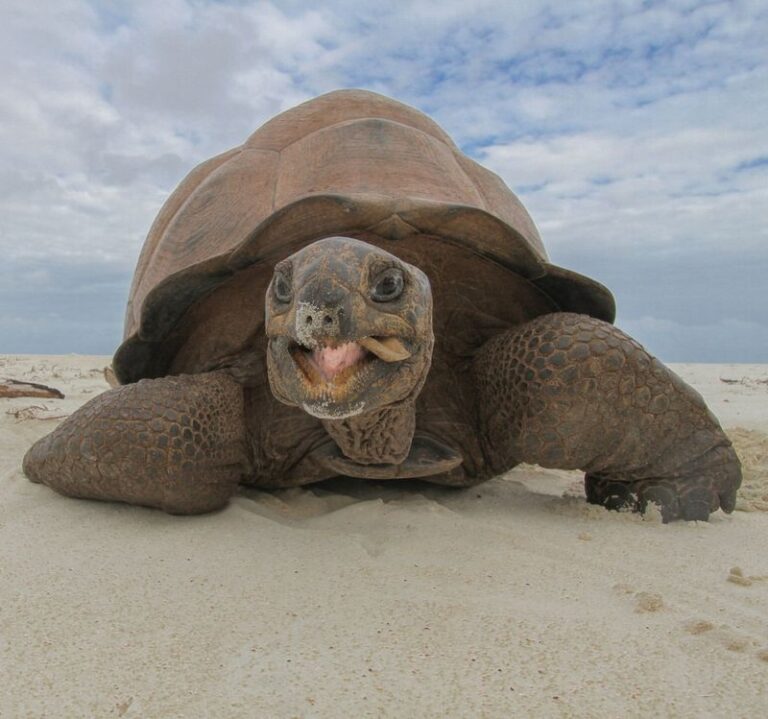15 Rare Dog Breeds You’ve Probably Never Heard Of And Where To Find Them
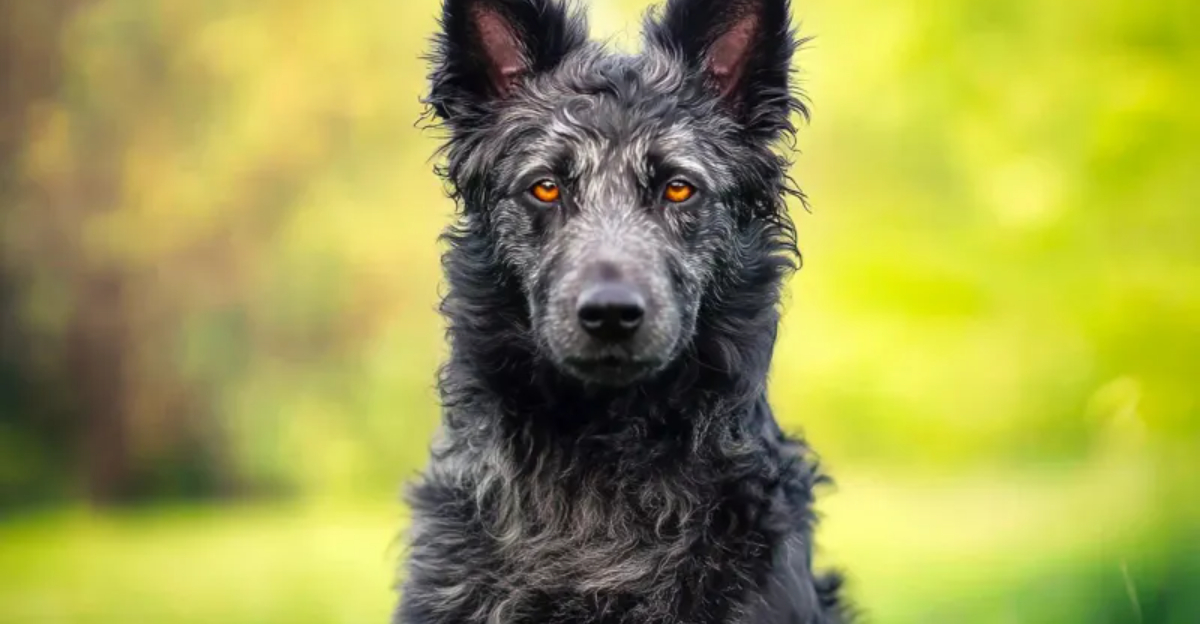
Ever wondered what dogs you might be missing out on beyond the popular Labradors and Shepherds? The dog world is surprisingly diverse, with hundreds of breeds that rarely make it into the spotlight.
Some of these lesser-known canines have fascinating histories, unique abilities, and striking appearances that would turn heads at any dog park.
Let’s explore 15 of the rarest dog breeds on the planet and where you might actually find one if you’re looking to add an unusual companion to your family.
1. Alaskan Klee Kai
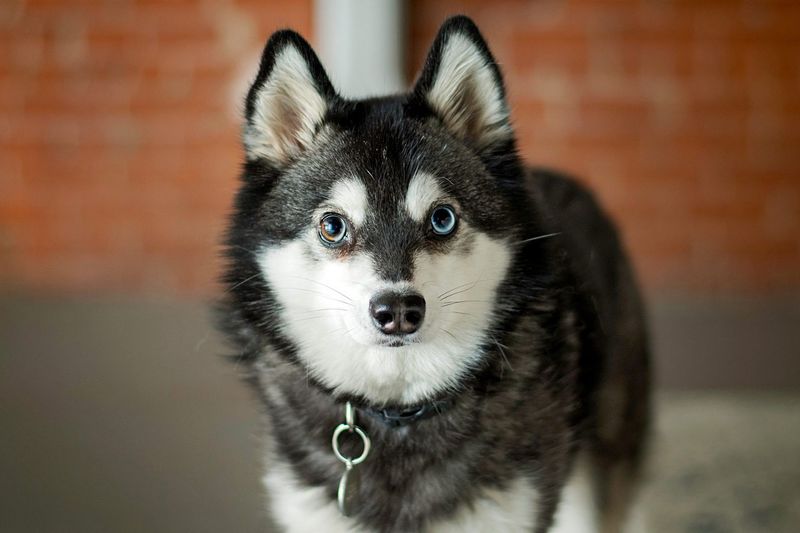
Think of a husky that accidentally shrunk in the wash – that’s essentially what you’re getting with the Alaskan Klee Kai! Standing at just 13-17 inches tall, these mini-huskies were developed in Alaska during the 1970s to create companion-sized versions of their working relatives.
Despite their diminutive size, Klee Kais pack all the personality of their larger counterparts. They’re intelligent, energetic, and surprisingly vocal with a range of distinctive “talking” sounds that owners find endearing.
Finding one requires patience and research. Most Klee Kais come from specialized breeders concentrated in Alaska and across the northern United States. Expect waiting lists and thorough screening processes – breeders are protective of this relatively new breed and want to ensure they go to suitable homes.
2. American Hairless Terrier
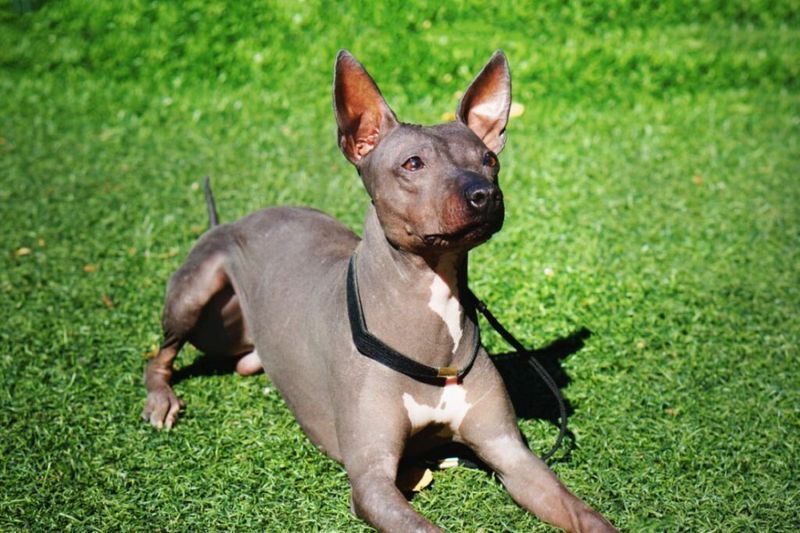
Sunscreen is a must-have for these unique canines! Born from a genetic mutation in Rat Terriers, the American Hairless Terrier emerged in the 1970s in Louisiana and represents one of the few naturally hairless dog breeds in the world.
Perfect for allergy sufferers, these dogs combine the spunky terrier temperament with a completely hypoallergenic coat (or lack thereof). Their skin can display fascinating patterns of spots and colors, ranging from solid pink to mottled black, brown, and red combinations.
Looking to adopt one? Specialized breeders can be found primarily in the southern United States, particularly Louisiana where the breed originated. The United Kennel Club recognized them in 2004, and the American Kennel Club followed suit in 2016, helping increase their visibility but they remain uncommon outside terrier enthusiast circles.
3. Azawakh
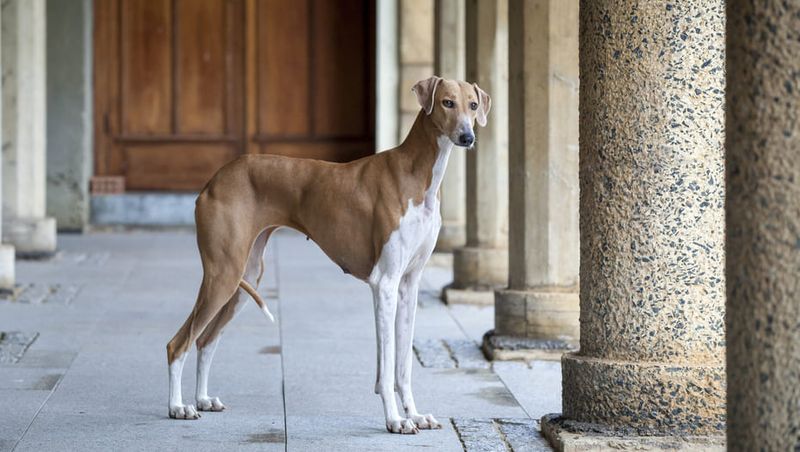
Supermodels of the dog world, Azawakhs might make you do a double-take with their impossibly lean physiques. Hailing from West Africa’s Sahel region, these sighthounds were traditionally kept by nomadic tribes as hunting companions and camp guardians.
Built for speed and endurance in harsh desert environments, their appearance is striking – extremely thin with prominent bones, deep chests, and long legs. Don’t mistake their slenderness for weakness though; these dogs are incredibly athletic and can reach speeds of up to 40 mph.
Finding an Azawakh outside Africa used to be nearly impossible, but small numbers have been imported to Europe and North America. Specialized breeders can be found in France (which has the largest population outside Africa), as well as scattered across the United States. The AKC officially recognized the breed only recently in 2019.
4. Biewer Terrier
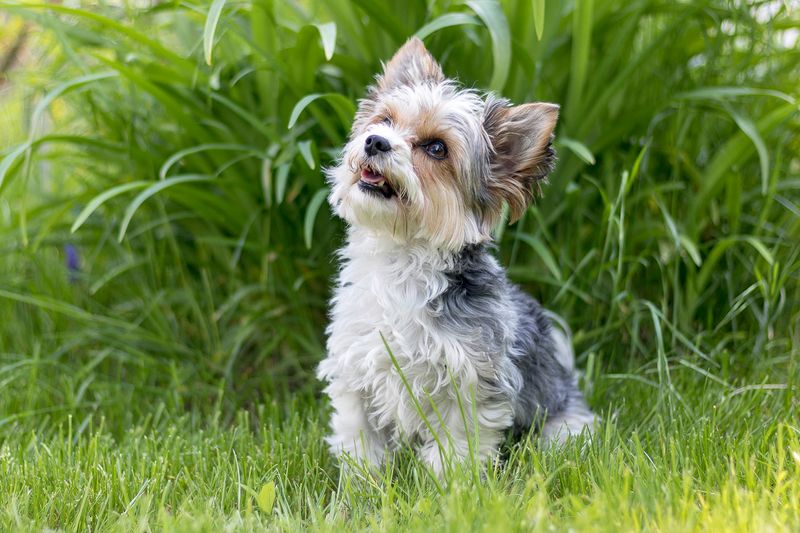
What happens when a Yorkshire Terrier is born with a genetic surprise? The Biewer Terrier! This charming accident occurred in 1984 when German couple Werner and Gertrud Biewer discovered a tri-colored puppy in their Yorkshire Terrier litter – a color pattern previously unseen in the breed.
Weighing just 4-8 pounds, these tiny companions sport luxurious, silky coats in a distinctive pattern of blue/black, gold/tan, and white. Their flowing hair parts down the middle of their backs like a perfectly styled toupee, giving them an eternally well-groomed appearance.
Originally confined to Germany, Biewer Terriers made their way to North America in the early 2000s. Today, dedicated breeders can be found throughout the United States, though numbers remain limited. The breed gained full AKC recognition in 2021, making them one of the newest officially recognized breeds in America.
5. Canaan Dog
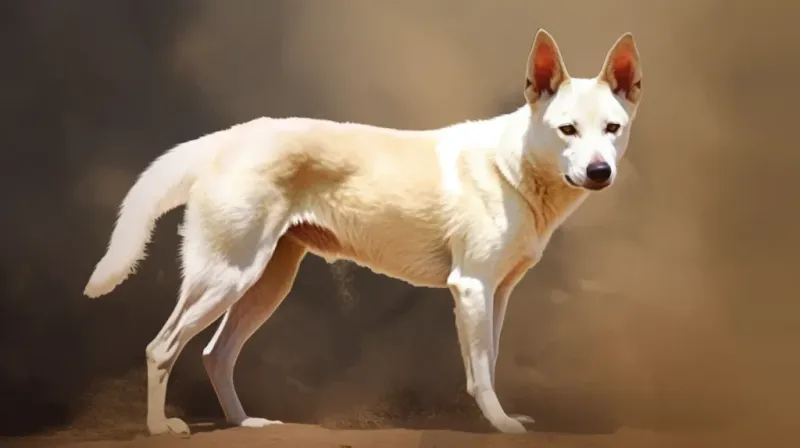
Survivors of ancient times, Canaan Dogs have roamed the Middle East since Biblical days. These medium-sized dogs lived semi-wild in the deserts of Israel for thousands of years before being domesticated again in the 1930s when they were trained as sentries and messengers during World War II.
Built for desert life, they sport a dense double coat that can withstand extreme temperatures and typically comes in white with patches of black, brown, or red. Their most striking feature might be their alert, fox-like expression and naturally upright ears that miss nothing.
Finding a Canaan Dog requires dedication – they remain one of the rarest recognized breeds worldwide. Small populations exist in Israel (their homeland), with scattered breeders in the United States, United Kingdom, and Australia. Conservation efforts continue to preserve this ancient breed that represents one of the oldest forms of domesticated dogs still in existence.
6. Czechoslovakian Vlcak

Wolf meets dog in this fascinating experiment from behind the Iron Curtain. Created in 1955 by crossing German Shepherds with Carpathian wolves, the Czechoslovakian Vlcak (pronounced “vul-chak”) was initially developed for military border patrol in Cold War Czechoslovakia.
With their athletic build, amber eyes, and thick gray coat, these dogs look remarkably wolf-like – enough to make your neighbors nervous! Unlike pure wolves, however, they’ve been selectively bred for trainability and human companionship, though they retain strong independent instincts.
Finding one outside Europe requires persistence. The largest populations remain in the Czech Republic and Slovakia, with small but growing numbers in other European countries. In North America, a handful of dedicated breeders exist, primarily in Canada and the northern United States. Be prepared for extensive screening as breeders are extremely selective about homes for these challenging but rewarding companions.
7. Kooikerhondje
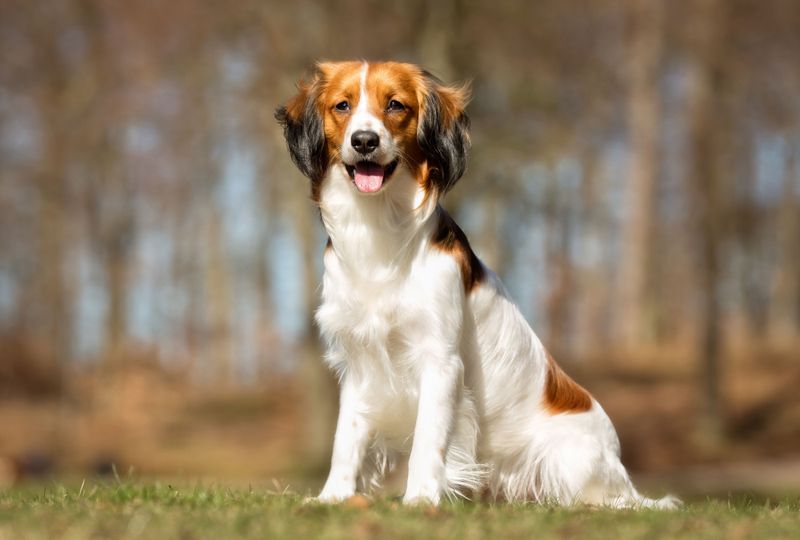
Straight out of a Dutch Golden Age painting, these spaniel-type dogs have been helping hunters lure ducks into elaborate traps called “kooi” for centuries. Their distinctive feathered tails, waved like flags while working, earned them the name “little decoy dog” (the literal translation of Kooikerhondje).
With their cheerful expression, medium-length white coat with red-orange patches, and characteristic black “earrings” (tufts of black hair on ear tips), they’re both beautiful and functional. Nearly extinct after World War II, the breed was saved by the efforts of Baroness van Hardenbroek van Ammerstol who found and bred the remaining dogs.
While common in their native Netherlands, finding one elsewhere requires patience. Small populations exist in Scandinavia and Germany, with growing numbers in North America since their introduction there in the 1990s. The AKC finally recognized the breed in 2018, increasing their visibility in the United States.
8. Mudi
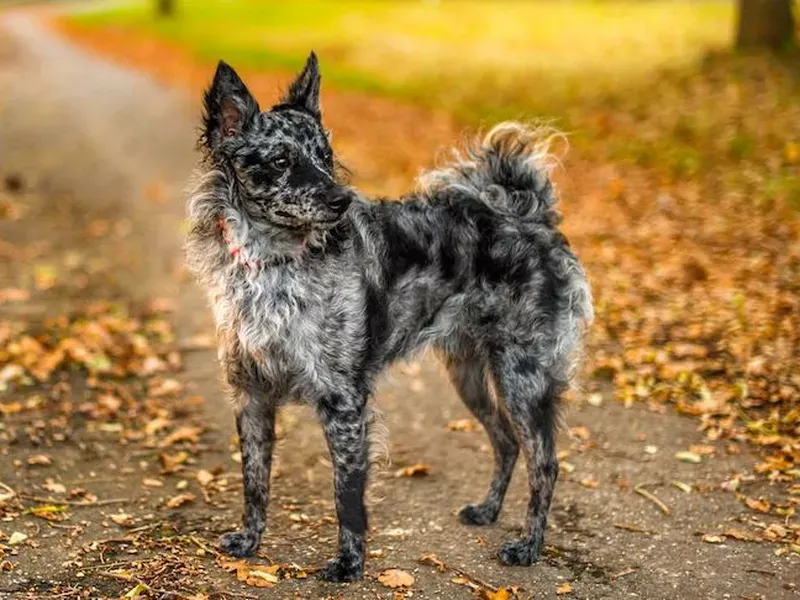
Hungary’s best-kept secret might be this versatile farm dog that can herd sheep, hunt rodents, and compete in dog sports with equal enthusiasm. Looking like the result of a border collie and poodle mix (though they’re a distinct breed), Mudis showcase curly to wavy coats in unique colors including merle, black, white, brown, and even yellow.
Medium-sized with a fox-like face and expressive eyes, these dogs practically vibrate with energy and intelligence. Their alert ears – sometimes fully erect, sometimes with floppy tips – give them an eternally curious expression that matches their quick-learning nature.
Finding a Mudi outside their native Hungary presents a challenge. Small breeding programs exist in Finland and Sweden, with tiny populations in the United States and Canada. The AKC only recognized the breed in 2022, making them among America’s newest official breeds. Expect waiting lists and possibly international shipping if you’re set on adding this rare Hungarian treasure to your family.
9. Norwegian Lundehund
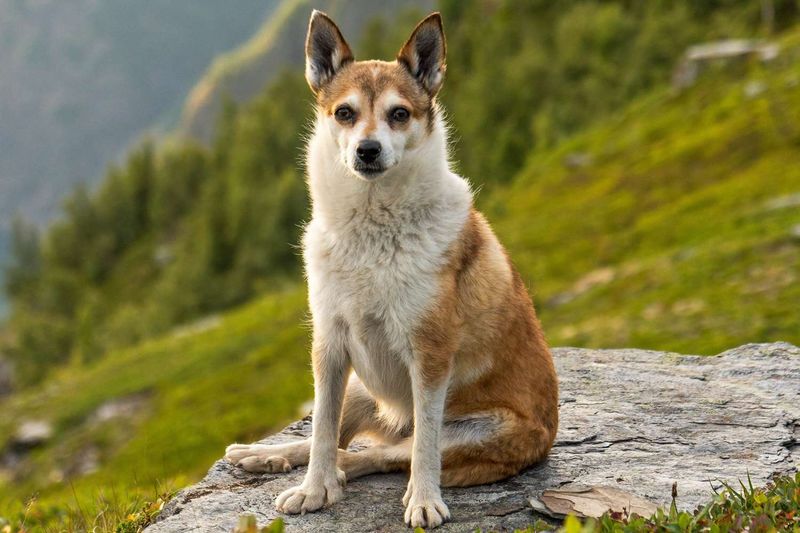
Evolutionary marvels with six toes on each foot, Norwegian Lundehunds developed their unique anatomy for one incredibly specific job – scaling steep cliffs to hunt puffins (“lunde” in Norwegian) on remote islands along Norway’s coastline.
Beyond their remarkable feet, these spitz-type dogs can bend their head backward to touch their spine and close their ears completely – adaptations for tight cliff-face navigation. Their tan and white coats and playful fox-like expression belie the incredible physical specialization hidden in their compact frame.
Nearly extinct during World War II with only six dogs remaining, careful breeding saved the Lundehund from disappearing. Today, they remain extremely rare even in Norway. Small breeding programs exist in Scandinavia, with very limited numbers in North America and Europe. Health issues related to their limited genetic pool present ongoing challenges, making responsible breeding crucial for their future.
10. Otterhound
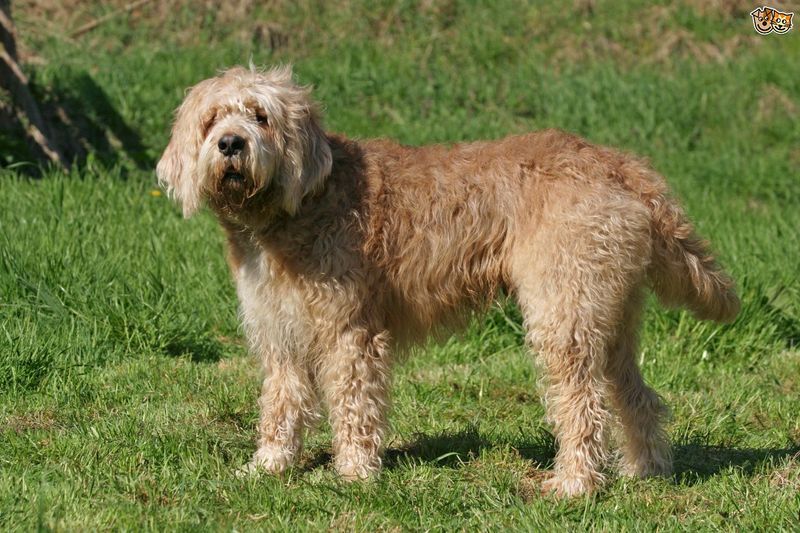
With fewer than 800 left worldwide, the shaggy Otterhound is actually rarer than giant pandas! Originally bred in medieval England for hunting otters in rivers and streams, these large, boisterous dogs sport rough, waterproof double coats and webbed feet perfect for swimming.
Their most distinctive feature might be their nose – Otterhounds possess one of the most powerful scenting abilities in the dog world, able to track scents underwater and up to 14 days old. Their shaggy beards and eyebrows give them a perpetually disheveled, wise-old-man appearance that contrasts with their often goofy personality.
Finding an Otterhound requires serious dedication. The UK remains home to most of the population, with small numbers in the United States and Canada. When otter hunting was banned in England in 1978, the breed lost its original purpose, contributing to its decline. Conservation breeding programs now focus on preserving this ancient British breed before it disappears completely.
11. Phu Quoc Ridgeback
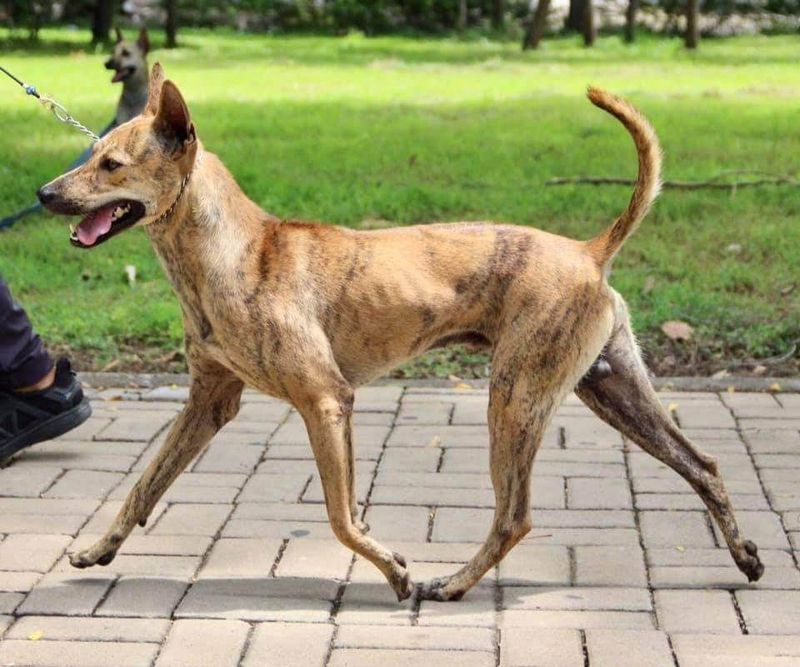
From a tiny island off Vietnam’s coast comes one of only three breeds in the world with a ridge of backward-growing hair along their spine. Named after Phu Quoc Island where they originated, these athletic dogs were once so isolated that they developed entirely without outside influence for hundreds of years.
Medium-sized with a short, sleek coat typically in red, black, or brindle, their most distinctive feature is the ridge of hair growing in the opposite direction along their back. Historically used for hunting and guarding in Vietnam’s jungle environment, they combine intelligence with impressive physical abilities including climbing trees – a rare skill among domestic dogs.
Finding one outside Southeast Asia presents a significant challenge. The largest populations remain in Vietnam, with small numbers in Thailand and neighboring countries. International recognition remains limited, and export of purebred specimens is tightly controlled by Vietnamese authorities who consider them a national treasure. A handful have made their way to Europe and North America in recent decades.
12. Skye Terrier
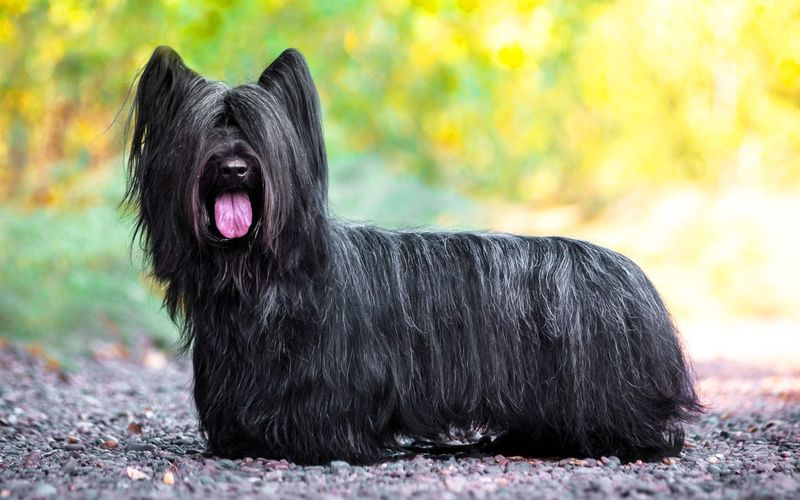
Beneath all that hair lies one of Scotland’s oldest and most endangered terrier breeds. Made famous as the loyal companion of Greyfriars Bobby (who guarded his owner’s grave for 14 years), Skye Terriers have declined to critical levels with fewer than 30 puppies registered annually worldwide.
Their most dramatic feature is undoubtedly their coat – long, straight hair that completely covers their eyes and drapes to the ground, concealing their low, elongated body. Originally bred for hunting foxes and badgers on Scotland’s Isle of Skye, their deceptively strong bodies and determined personalities hide beneath their elegant appearance.
Finding a Skye Terrier today requires extensive networking within breed preservation circles. Small numbers exist in the United Kingdom (primarily Scotland), with scattered breeders in the United States and Canada. Preservation efforts continue for this living piece of Scottish heritage that once was fashionable in Victorian times but now faces extinction without dedicated breeding programs.
13. Sloughi
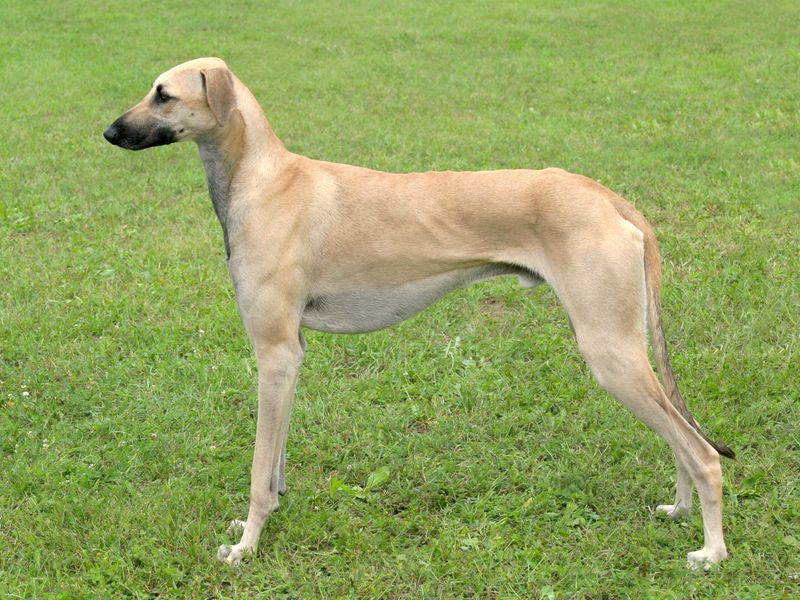
Ancient hunters of North Africa, Sloughis (pronounced “SLOO-ghee”) have been prized by nomadic Berber tribes for thousands of years. These elegant sighthounds combine incredible speed with remarkable endurance – qualities that made them invaluable for hunting gazelle across the vast deserts of Morocco, Algeria, Tunisia, and Libya.
Often mistaken for Greyhounds or Azawakhs, Sloughis are distinguished by their more muscular build, longer ears, and melancholy expression. Their short coats in various shades of sand, red, and brindle provide natural camouflage in desert environments.
Finding a Sloughi requires specialized research. The largest populations remain in Morocco, where they’re considered a national treasure. Small numbers exist in Europe, particularly France and Germany, with very limited breeding programs in North America. The breed received AKC recognition in 2016, but remains exceedingly rare outside North Africa. Cultural restrictions on exporting these prized dogs have historically limited their spread worldwide.
14. Stabyhoun
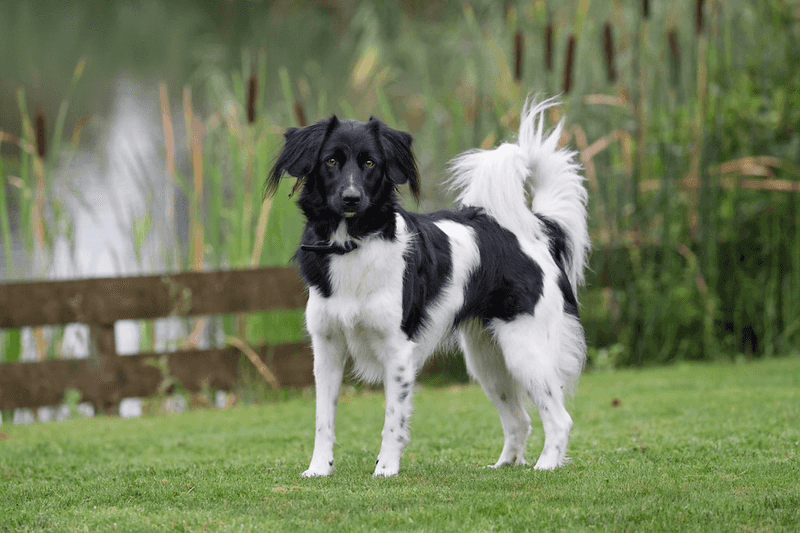
With only about 7,000 worldwide, the Dutch Stabyhoun represents one of Europe’s rarest breeds despite being a versatile farm dog with a gentle personality. Their name offers a clue to their original purpose – “Staby” derives from “sta mij bij” (stand by me) while “houn” simply means dog in Frisian.
Medium-sized with distinctive black and white or brown and white coats, they feature feathering on their ears, chest, and tail that gives them an elegant appearance. Unlike many hunting breeds, Stabyhouns were developed to be all-purpose farm dogs – hunting, guarding, and vermin control all in one tidy package.
Finding one requires patience and likely international connections. The vast majority live in their native Netherlands, particularly in the Frisian region where breeding is carefully monitored by the Dutch Association for Stabyhouns and Wetterhounds. Small populations have been established in Scandinavia, with tiny numbers in North America. Expect waiting lists and thorough screening if you hope to add this rare Dutch treasure to your family.
15. Thai Ridgeback
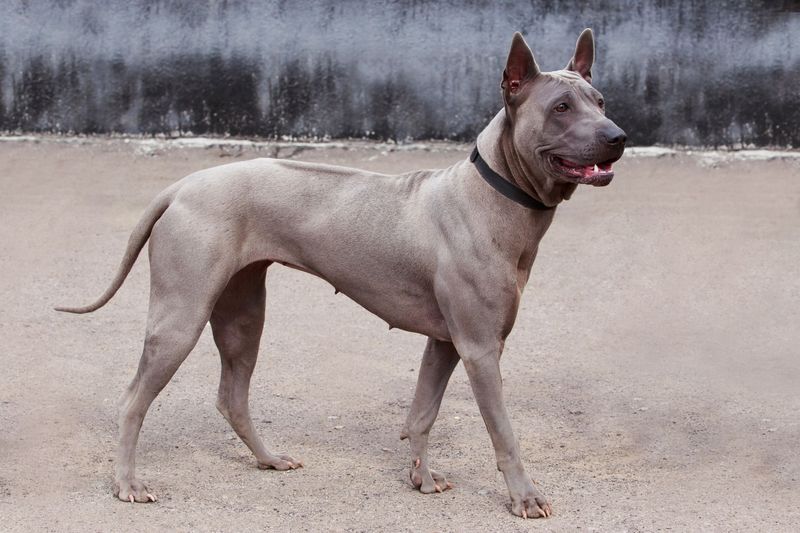
Straight from the pages of ancient Thai manuscripts, these distinctive dogs have remained largely unchanged for over 3,000 years. More common than their Vietnamese cousin (the Phu Quoc Ridgeback) but still rare outside Southeast Asia, Thai Ridgebacks were isolated in eastern Thailand for centuries, resulting in a pure landrace breed with minimal human intervention.
Athletic and muscular with a short coat in blue, black, red, or fawn, their most striking feature is the ridge of hair growing in the opposite direction along their back – which can form eight different distinct patterns. Historically used for hunting, pulling carts, and guarding in Thailand’s tropical climate, they combine independence with territorial instincts.
Finding one outside Thailand presents challenges. The largest populations remain in their homeland, particularly in eastern provinces like Chon Buri. Small numbers have been exported to the United States and Europe since the 1990s, with limited breeding programs established. The AKC currently recognizes them in their Foundation Stock Service, an early step toward full recognition.

